

Natural User Experiences - Touch, Voice, Gesture, and more...
A Natural User Interface (NUI) is a developed system with the motive of human-computer interface and that is built around intuitive human actions that are normal and everyday behavior to enhance technology.
A Natural User Interface (NUI) is a developed system with the motive of human-computer interface and that is built around intuitive human actions that are normal and everyday behaviour to enhance technology. Sometimes these NUI's are seemingly visible for an unhindered experience, whereas in some cases, they are intermediary and responsible for interactions.
The use of Natural User Interface is not intimidating as they are smartly adapted to natural human behaviour for ease of operations. The Natural User Interface could seek psychology to train if imitating human behaviour in technology had emotions. Yet, the NUI's capture human behaviour such closely that technology is coming to be adapted easily.
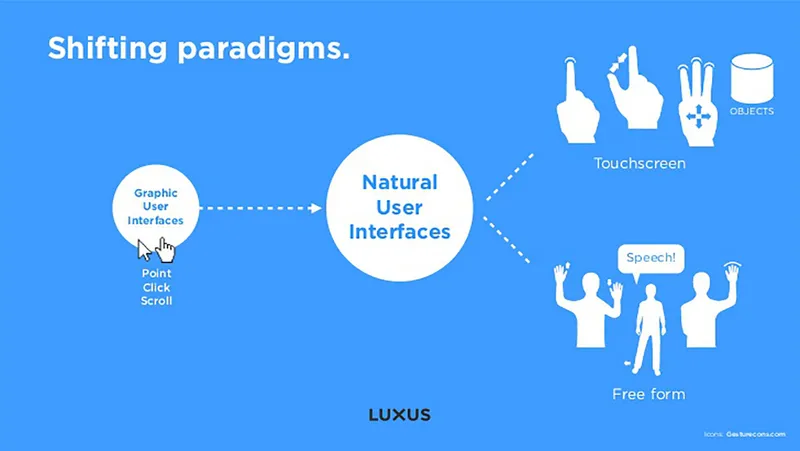
Speech, gesture and voice recognition, touch-controlled systems have been adopted by designers for an unrealistic yet first of its kind experience and the development stays on to build the systems that interact with lesser human effort.
The UI/UX Designers were till some years back only challenged by Visual User Interfaces and graphics. Our brain responds to different senses varyingly. The vision being the most important sense, followed by smell, taste, sound and touch. These sensory parameters are explored by designers over the years to present a comfortable experience.
Bill Buxton the Principal researcher at Microsoft says, "Exploit skills that we have acquired through a lifetime of living in the world, which minimizes the cognitive lead and therefore, minimizes the distraction. NUI's should always be designed with the use context in mind" (www.interaction-design.org).
Visual interfaces are engaging, but when the need for voice and touch interfaces has to be explored, the technology gets more complex, yet needs to present a simplistic solution. The art is in exploring the nuances of each sensory aspect in detail, the end-user expectations and the ability to adapt and engage with the latest developments.
This article explores the Touch and Speech aspect of User Interface and how it comes to shape the design for an enhanced experience.
Touch
Touch is the prime sensory experience and many developments have been carried around touch senses to influence browsing experiences. The dynamics depend on how people hold their phone, and there are variations as seen in the following figure and data from www.umattres.com/mt/
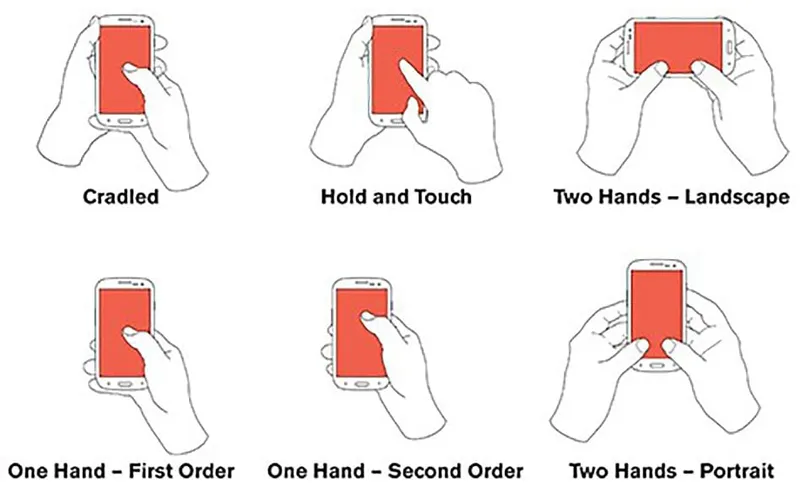
Common ways people hold and touch their mobile phone
- 75% of users touch the screen only with one thumb.
- Fewer than 50% of users hold their phone with one hand.
- 36% of users cradle their phone, using their second hand for both greater reach and stability.
- 10% of users hold their phone in one hand and tap with a finger of the other hand.
These statistics come to define how the touch-oriented developments come to be adapted in technology.
Interestingly observed that the mobile device screens are seldom touched at the corners or swiped diagonally, while the core of attention is the centre of the screen. This has led to adaptations that designers place important content in the centre of the page and secondary and tertiary date towards the top and bottom.
Voice
Speech recognition has established its mark in technology and making tasks simpler by the mere utterance of a command. Voice commands have come to be part of our life, the AI's await our command and the information is just around. The following image from https://www.toptal.com gives us a clear insight into the way smart speakers are influencing our life and the kind of queries asked.

Domains Smart Speakers are used for
Voice interactions depend largely on connectivity, processing activity, processing speed, applied environment, error in reading, interpretations based on accents to name a few factors. The environment not only means where the technology is applied but also where the technology is practised. While technology applied could be a home or car, where the technology is applied could be indoors or outdoors. The following graph shows a statistic of how people make use of technology in a different environment.
These images give us a glimpse of human-technology interactions in a different environment.
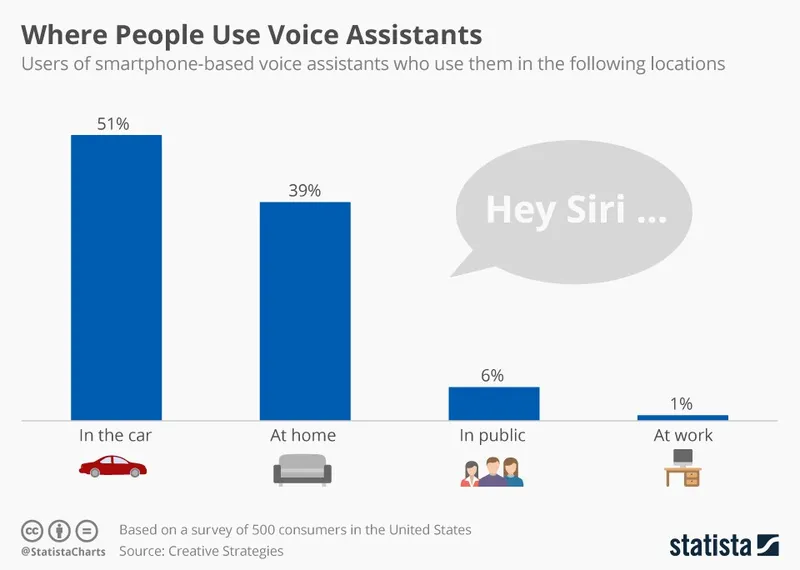
Where people use Voice Assistants
Voice interactions present us different avenues including your Smart TV, Amazon Echo, Smart Thermostat, Google & iPhone assistants to name a few. They are used by organisations for engaging customers for a futuristic experience. Chatbots and Voice Bots are Artificial Intelligence that communicates through textual or speech interactions. Microsoft, Google, Apple, Amazon and some major companies are already using Voice bots for business interactions and to keep their consumers engaged.
https://industryarc.com states that, the voice bot industry is going to see a CAGR growth of 35% between 2018-2023 due to easy accessibility over other apps.
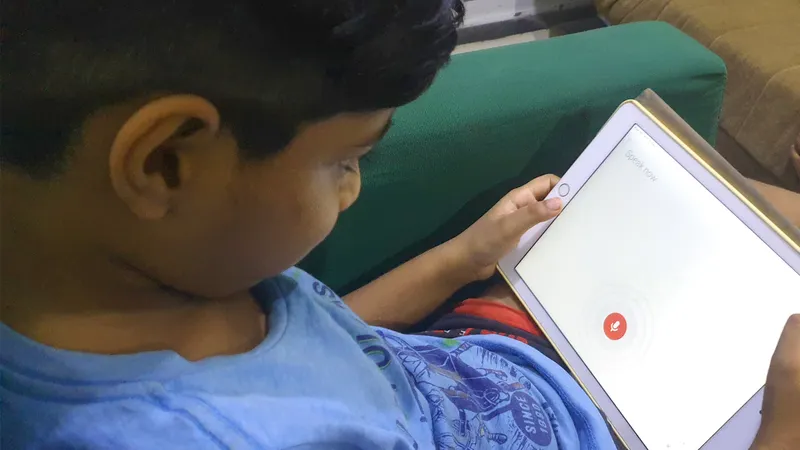
Youtube's Voice Assistance search is so easy that a 5 yr old can use it
While voice designs are making our tasks easier and manageable, UX designers must identify the kind of gaps in the design and execution models and environmental testing.
Designers have gone to create technological advances that present us the best of all worlds by culminating visual, speech and touch experiences. Google Maps, is a sensory experience that inculcates both visual, speech and touch aspects to a defined advantage.
Multi-modal Interfaces
Designers have gone to create technological advances that present us the best of all worlds by culminating visual, speech and touch experiences. Google Maps, is a sensory experience that inculcates both visual, speech and touch aspects to a defined advantage.

Google map - direction .. the output include visual and sound.. both
Self-Driving cars is another multi-modal interface that works around touch, visual and speech recognitions to enhance future technology frontiers.
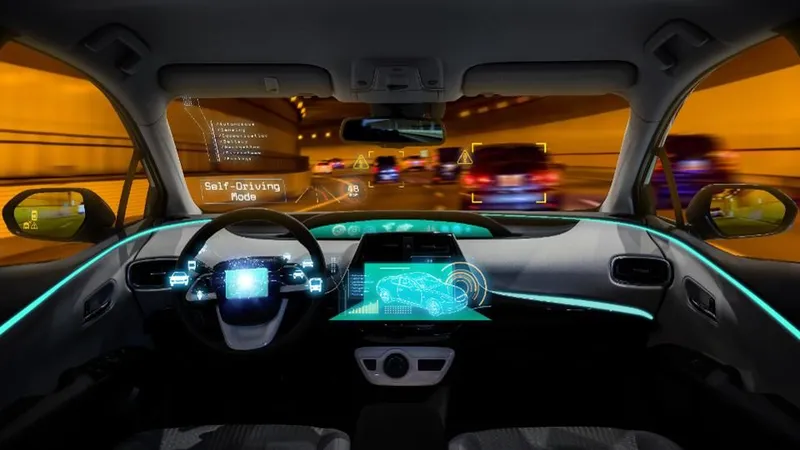
A heads-up display on an autonomous car dashboard at night Source: Shutterstock
The Future of Technology is a pleasant experience and inevitable.
The designer can bring an inexplicable experience in technology, however, the transitions from the current to the future have to be done keeping in mind the adapting capacity of the end-users. This means studying and analysing the learning curve of the end-users, their cognitive acceptance and their interaction experience with the technology.
From Home entertainment, chatbots, real-time text responders, paired devices, auditory and tactile feedback technology has transitioned and emerged. Designers are exploring the unexperienced domain of gesture recognition, brain-machine interfaces, natural language processing etc., there is a world to explore, and irreplaceable design to be built.
Touchscreen smartphones were once a fancy, but today a part of every life. Likewise, the adaptation and culmination of experience should be balanced to a product that is promising and well accepted. Technology means ease and creating this ease is a mesh of interfaces and designs; all in the line of enhanced productivity.





